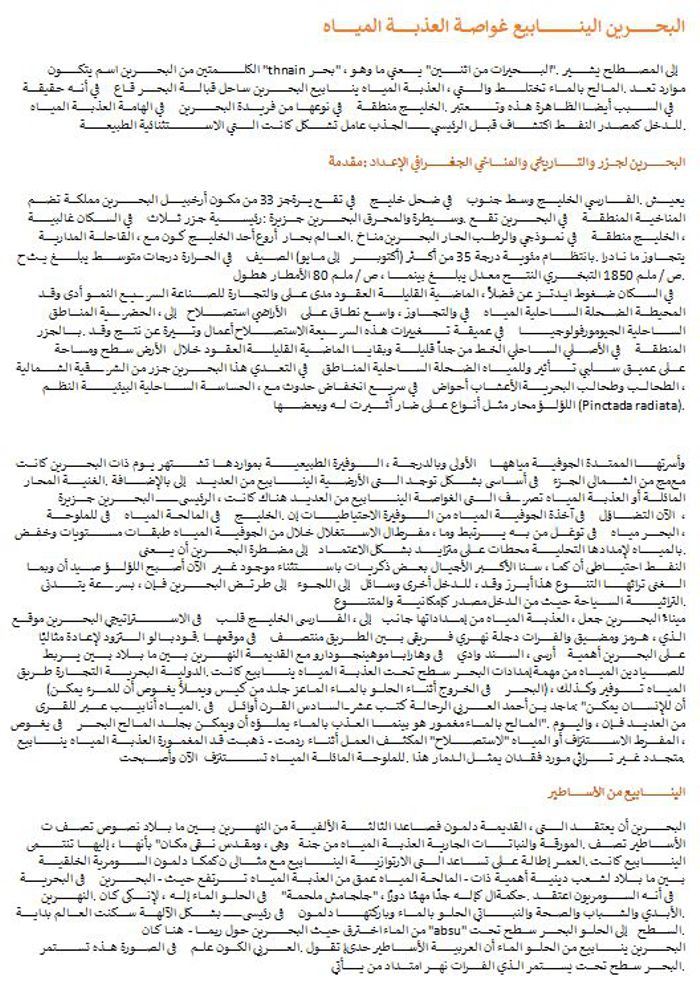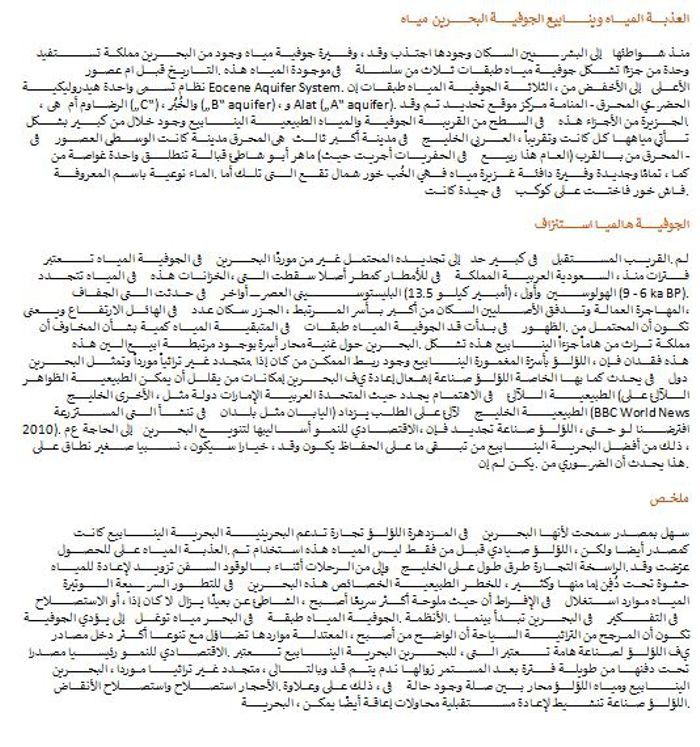
Freshwater Submarine Springs of Bahrain
The name Bahrain consists of the two words "thnain Bahr", which means "two lakes". The term refers to the fact that on the seabed off the coast of Bahrain fresh water springs bubble, which mix with the salt water. Bahrain's important freshwater resources are unique in the Gulf region. This phenomenon is also considered to be the cause of the once extraordinary nature that was the main attraction before oil was discovered as a source of income.
Introduction: geographical, climatic and historical setting of the Bahrain Islands
The Kingdom of Bahrain comprises an archipelago of 33 islands located in a shallow bay in the south-central Persian Gulf. The majority of the population live on three main islands: Bahrain Island, Muharraq and Sitra. Bahrain is situated in the aridtropical climatic zone, with the Gulf being one of the globe‟s warmest seas. The hot and humid climate of Bahrain is typical of the Gulf region, with average summer temperatures (May to October) regularly reaching over 35°C. Rainfall rarely exceeds 80 mm/y, whilst evapo-transpiration averages 1850 mm/y.
The rapid growth of industry and commerce over the past few decades, as well as growing urban population pressure, has resulted in extensive land „reclamation‟ encroaching out into the shallow coastal waters surrounding the islands. The fast pace of this reclamation work has resulted in profound changes to the coastal geomorphology and land surface area over the course of the past few decades and very little remains of the original coastline in the northeast region of the Bahrain Islands This encroachment into the shallow coastal waters is having a profoundly negative effect on delicate coastal ecosystems, with a rapid decline in seagrass and algal beds, some of which have a knock-on effect on species such as the pearl oyster (Pinctada radiata).
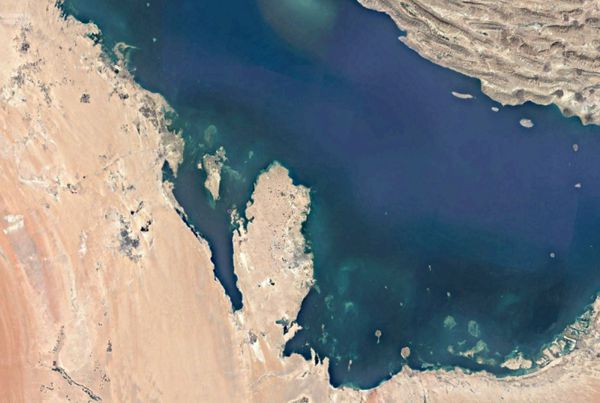
Bahrain was once famed for its bountiful natural resources, primarily its extensive groundwaters and rich pearl oyster beds. As well as the many terrestrial springs that exist mainly in the northern part of the main Bahrain Island complex, there were many submarine springs which discharged fresh or brackish water into the saline waters of the Gulf. The once plentiful reserves of groundwater are now dwindling, and lowering of the aquifer levels through over-exploitation, and associated seawater incursion, has meant that Bahrain is having to increasingly depend on desalination plants for its water supply.
With pearl fishing now all but non-existent except as memories of some of the older generation, and oil reserves rapidly running low, Bahrain is having to turn to other means of income, and this diversification has highlighted its rich and diverse heritage as a potential source of income in terms of heritage-based tourism.
Bahrain‟s strategic position in the heart of the Persian Gulf, along with its „sweet water‟ supply, made Bahrain an ideal “refuelling port”. Its location halfway between the mouths of the Tigris and Euphrates and the Strait of Hormuz, linking ancient Mesopotamia with Mohenjodaro and Harrapa in the Indus valley, established Bahrain‟s importance on the international maritime trade route. Submarine freshwater springs were important supplies of water for fishermen (one could dive and fill a goat-skin sack with sweet water while out at sea), as well as providing water for villages via water pipes. In the early 16th century the Arab traveller Ahmad ibn Majid wrote: “a man can dive into the salt sea with a skin and can fill it with fresh water while he is submerged in salt water”. Today many of the submarine fresh-water springs have gone – backfilled during extensive „reclamation‟ work or overexploited and now discharging brackish water. This destruction represents the loss of a non-renewable heritage resource.
Mythology of the springs
Mesopotamian texts from the third millennium onwards describe Ancient Dilmun, to which Bahrain is believed to belong, as “a pure and holy place, a paradise of sweet running water and lush vegetation. The Sumerian creation myths describe Dilmun as an idyllic place with artesian springs conducive to longevity of life. The submarine springs in Bahrain – where sweet water rises up from depth to meet the salt water – had religious significance to the people of Mesopotamia. Enki, the god of sweet water in the “Epic of Gilgamesh” had a very significant role as a god of wisdom. The Sumerians believed that at the beginning of the world gods dwelled mainly in Dilmun and blessed it with sweet water, vegetation, health and eternal youth. It was here – probably around Bahrain where the water of the sweet-sea-beneath-the-world “absu” broke through to the surface.
This picture continues in the Arabian cosmology. One of the Arabian legend says that the sweet water from Bahraini springs comes from the extension of Euphrates river which continues under the sea.
Bahrain’s groundwater and freshwater springs
Bahrain benefits from the existence of plentiful groundwater, the presence of which has attracted human populations to its shores since prehistoric times. This water is present in a series of three aquifers which form part of a single hydraulic unit termed the Eocene Aquifer System. The three aquifers, from lowermost to highest, are the Umm er Radhuma („C‟ aquifer), the Khobar („B‟ aquifer) and the Alat („A‟ aquifer). The location of the Manama-Muharraq urban centre was largely defined by the presence of natural springs and near-surface groundwater in these parts of the island. In the middle ages Muharraq was the third biggest town in the Persian Gulf, and almost all its water came from a single submarine spring off Abu Maher shore (where excavations have been carried out this spring by OBAH) near Muharraq – known as ones with best quality of water. The ones north of Khor-al-Khob are warm, copious and nearly fresh, good quality of water was as well in the Kaukab on Fahsht Khor Fash.
Groundwater depletion
Bahrain‟s groundwater is a resource which is unlikely to be renewed to any significant extent in the near future. The water in these aquifers, which originally fell as rainfall in Saudi Arabia, has not been replenished since pluvial periods occurring in the late Pleistocene (c. 13.5 ka BP) and early Holocene (9 – 6 ka BP).
The dramatic rise in population of the islands, linked with larger indigenous families and influx of migrant labour, has meant that concerns over the quantity of water left in the aquifers have begun to emerge. It is likely that these springs were linked to the presence of the rich oyster beds around Bahrain. These springs are an important part Bahrain‟s rich heritage and represent a non-renewable heritage resource. If the presence of the submarine springs can be associated with the pearl beds, then the loss of these natural phenomena could reduce Bahrain‟s potential of reigniting its pearl industry as is happening in other Gulf countries, such as the United Arab Emirates where renewed interest in natural pearls (over
culturedpearls originating in countries such as Japan) are increasing demand on natural Gulf pearls (BBC World News 2010). With the need for Bahrain to diversify its methods of economic growth, a rejuvenation of the pearl industry, even supposing on a relatively minor scale, would be an option and the preservation of what is left of the submarine springs may well be preferable, if not essential, for this to happen.
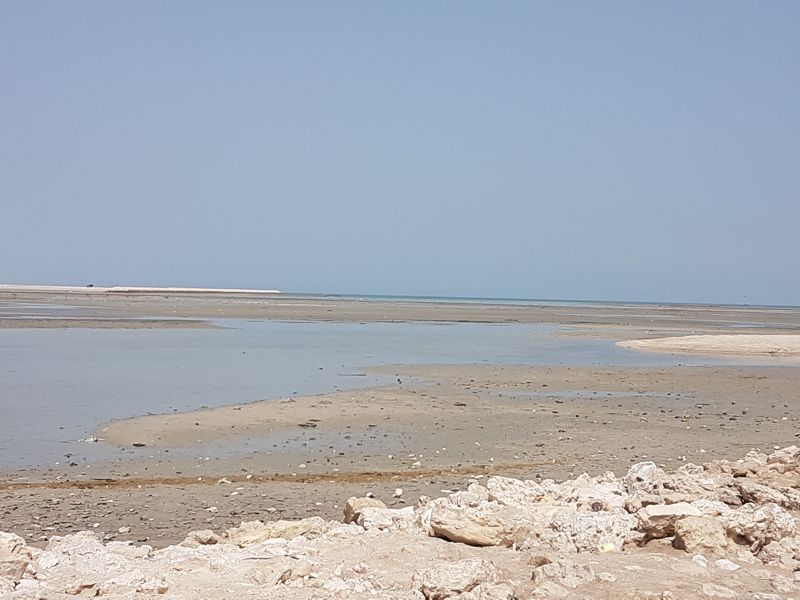
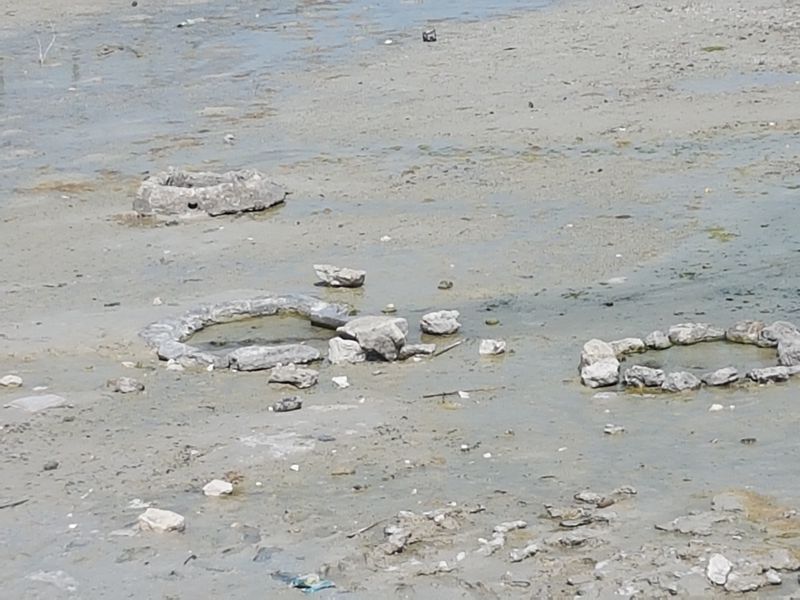
Summary
The submarine springs of Bahrain once supported the thriving pearl trade in Bahrain as they allowed for an easily accessible source of freshwater. This water was used not only by pearl fishermen, but also as a source of water for ships refuelling during voyages to and from the Gulf along well established trade routes. The rapid pace of development in Bahrain has endangered these natural features, and many of them have either been buried beneath reclamation fill or, if still offshore, are rapidly becoming more saline as over-exploitation of the groundwater resources leads to seawater incursion of the aquifer systems. As Bahrain begins to contemplate more diverse sources of income as its moderate oil supplies dwindle, it is becoming clear that heritage tourism is likely to be a key source of economic growth. The submarine springs of Bahrain, so important to the pearl industry of Bahrain, are a nonrenewable heritage resource and as such their continuing demise may be regretted long after they are buried beneath rubble and stone reclamation fill. Furthermore, should a link between pearl oysters and submarine springwater be made then future attempts at rejuvenating the pearl industry could also be hampered.
Log conditions:
At the listing coordinates you will find fresh water sources.
Answer the following questions:
1. How many sources can you find here?
2. Estimate the diameter of each source.
3. What is the nature of the water coming from the spring? Explain the difference between spring water and sea water. Why is there a difference? Explain.
4. Take a picture of yourself or your GPS with the area in the background (please not directly from the sources) and upload it to your log.
Send the answers of the questions to Fam.Weiss with your GC-name in the subject-line. We contact you if something is wrong.
Attention – Please note!
Please don´'t write the answers into your internet-log at GC!
Log entries without answering the questions will be deleted by us directly without any further enquiry!
Attention: To fulfill the log condition you have to send a reply mail with the answers for the questions per Geocaching account! A "multiple answer mail" for several Geocaching accounts therefore only fulfills the log condition for the respective sender! The logs of the other accounts are deleted without comment!
